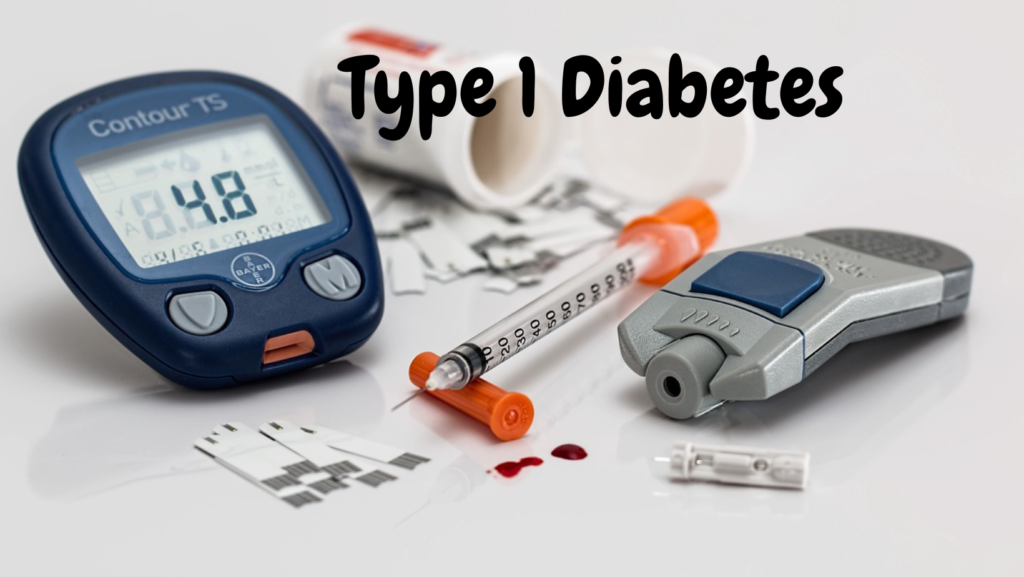Type 1 Diabetes:
Type 1 diabetes, an autoimmune condition of a chronic nature that is also known by the names of insulin-dependent diabetes and juvenile diabetes, involves the pancreas’s production of an insufficient amount of insulin or none. The hormone insulin plays a vital role in regulating blood sugar levels; therefore, its dearth engenders the accumulation of glucose in the bloodstream, giving rise to elevated blood sugar levels. Although it typically manifests in childhood or adolescence, Type 1 diabetes can afflict people of any age. Properly managing blood sugar levels to avoid complications necessitates lifetime insulin therapy.
Causes of type 1 diabetes:
The origins of type 1 diabetes are rooted in the destructive autoimmune assault on the pancreatic beta cells responsible for insulin production. Although the exact etiology of this phenomenon remains elusive, current scientific knowledge implicates a multifactorial interplay between genetic and environmental factors. The orchestration of such factors into a mechanistic understanding is a vexing problem that has continued to challenge the scientific community.
Environmental factors that have been linked to type 1 diabetes onset include exposure to toxins, viral infections such as coxsackievirus, mumps, or rubella, and dietary elements. It is noteworthy that genetic predisposition may be an essential factor in the disease’s pathogenesis, given the identification of specific genes that confer an elevated risk of type 1 diabetes. Nevertheless, despite the presence of such genetic markers, the development of diabetes is not a foregone conclusion. As the interplay between genetics and the environment remains a complex and intricate topic.
Symptoms :
The symptoms can include:
1. Excessive thirst
2. Frequent urination
3. Extreme hunger
4. Unexplained weight loss
5. Fatigue
6. Blurred vision
7. Irritability or mood changes
8. Tingling or numbness in the hands or feet
9. Dry skin or mouth
10. Slow-healing cuts or sores
If you are experiencing any of these symptoms, it is important to see a doctor as soon as possible for a proper diagnosis and treatment.
Management :
Type 1 diabetes is a complex condition that necessitates careful management. Insulin therapy is the cornerstone of treatment, replacing the insufficient insulin produced by the body. Treatment may also include a variety of other measures, including:
Frequent blood sugar testing aids individuals with diabetes in tracking their blood sugar levels and making adjustments to their insulin therapy or diet as needed.
Counting carbohydrates, as individuals with type 1 diabetes must pay close attention to the amount of carbohydrates they consume. Since carbohydrates can have a significant impact on blood sugar levels.
Eating healthily is critical for managing diabetes. This may entail avoiding sugary foods and drinks and consuming plenty of fruits, vegetables, and whole grains.
Regular physical activity can help to regulate blood sugar levels and improve overall health.
Continuous glucose monitoring technology, which enables real-time monitoring of blood sugar levels, can help people with diabetes to better manage their condition.
Insulin pumps, a small portable device that delivers insulin to the body through a catheter placed under the skin.
In some cases, individuals with type 1 diabetes may be eligible for pancreas or islet cell transplantation, which can restore the body’s ability to produce insulin.
Complications :
The perils of Type 1 diabetes are myriad and can have profound health implications. The spectrum of complications that can arise from the disease is wide-ranging and includes the following:
1. Hypoglycaemia, which refers to a condition characterized by low blood sugar levels that can result in symptoms such as confusion, dizziness, seizures, and even unconsciousness.
2. Diabetic ketoacidosis (DKA), is a life-threatening condition that can arise when the body produces excessive amounts of ketones. Ketones are acidic blood byproducts that can accumulate and overwhelm the body’s buffering system.
3. Cardiovascular disease, a leading cause of morbidity and mortality in Type 1 diabetes patients, can include conditions such as coronary artery disease, stroke, and high blood pressure.
4. Nerve damage, a common complication of prolonged hyperglycemia, can lead to numbness, tingling, and even loss of sensation in the extremities.
5. Eye damage, a condition that can result from chronic exposure to high blood sugar levels, can damage blood vessels in the eyes, leading to vision problems and even blindness.
6. Kidney damage, a dreaded complication, can progress to kidney failure, which may necessitate dialysis or a kidney transplant.
7. Foot problems, a result of nerve damage and poor blood flow, can manifest as infections, ulcers, and even the need for amputation.
The management of Type 1 diabetes is crucial in averting or mitigating the development of these complications, making it vital for patients to work closely with their healthcare providers to implement effective treatment and management strategies.


Pingback: Celiac Disease: Symptoms, Diagnosis, and Living Gluten-Free